I posted a pic of one of the Elk Hair Caddis I had tied, over the weekend, on Twitter and one of the people I talk with responded that I should try the CDC version.
Ummm … yeah … I realize as this sinks in that I never even replaced the CDC that I had, years ago, so I now have, well, none.
A trip to the shop, a gap in the day, and here we go…
- #12 Barbless Dry Fly Hook
- 10/0 Veevus thread, in Olive (D25)
- Superfine Dry Fly Dubbing (also Olive)
- Ginger CDC
- Bulk Elk Hair (Natural)
Start by securely setting the hook in the vise, then wind on a bit of the thread, starting a short distance behind the eye.
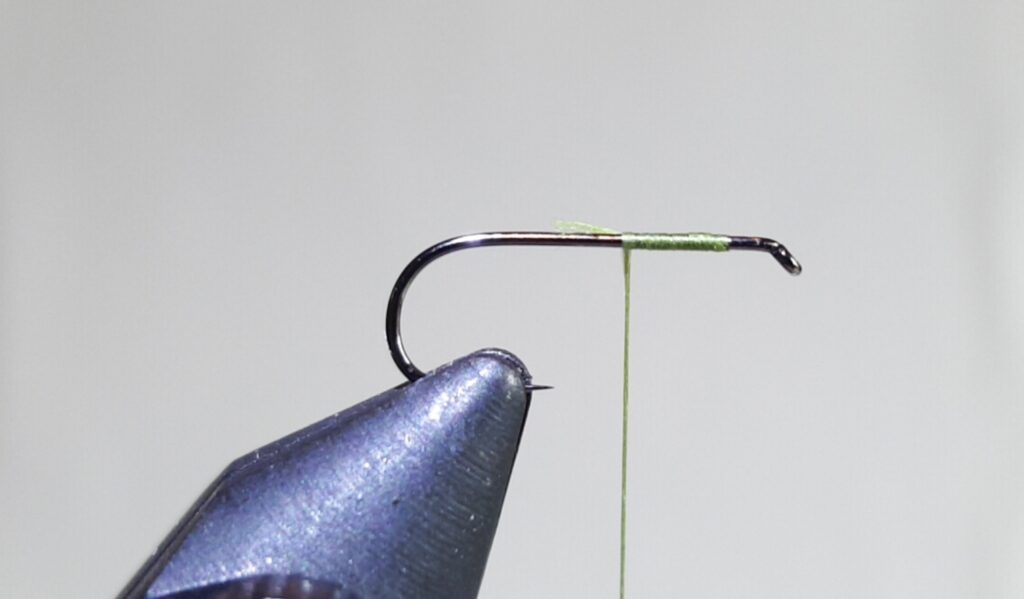
Then, wrap back to between the point and the bend, to create a base layer to anchor the other materials against. With CDC, which is notoriously slippery, I think this is essential.
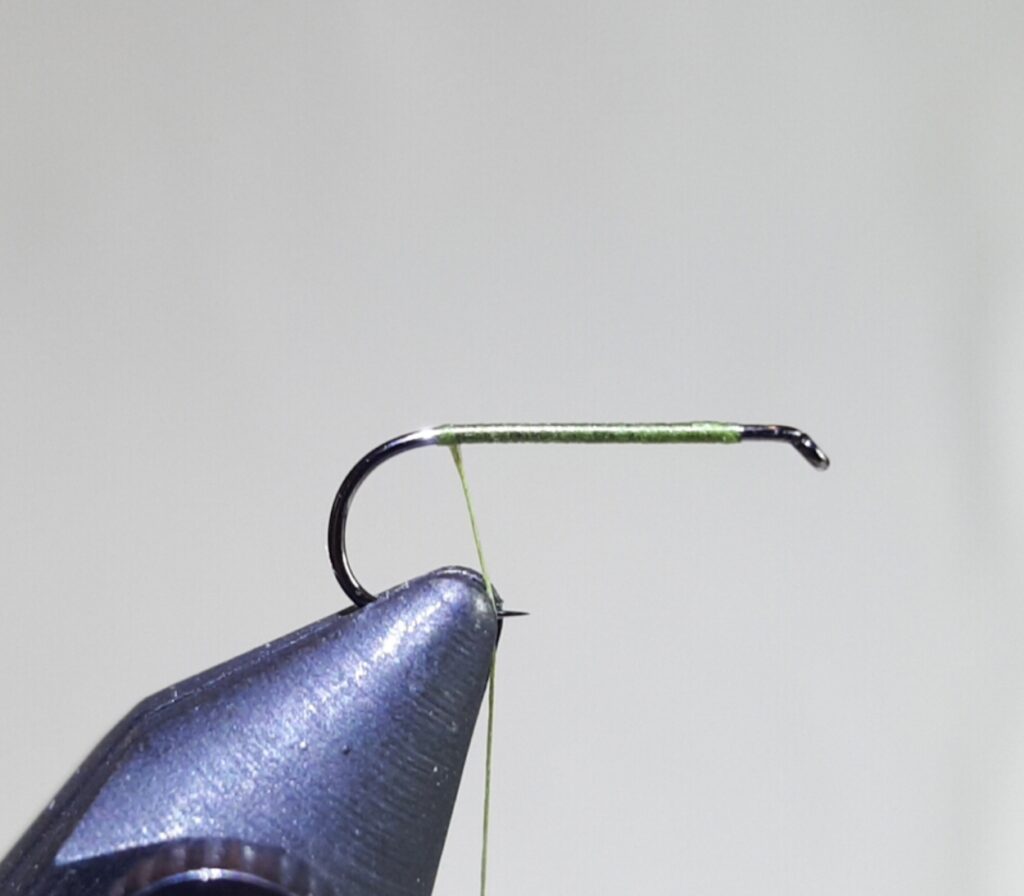
Next, pick a good CDC feather. Fibers at least 2x the length of the hook gap, and nicely (eerily?) like swaying tendrils.
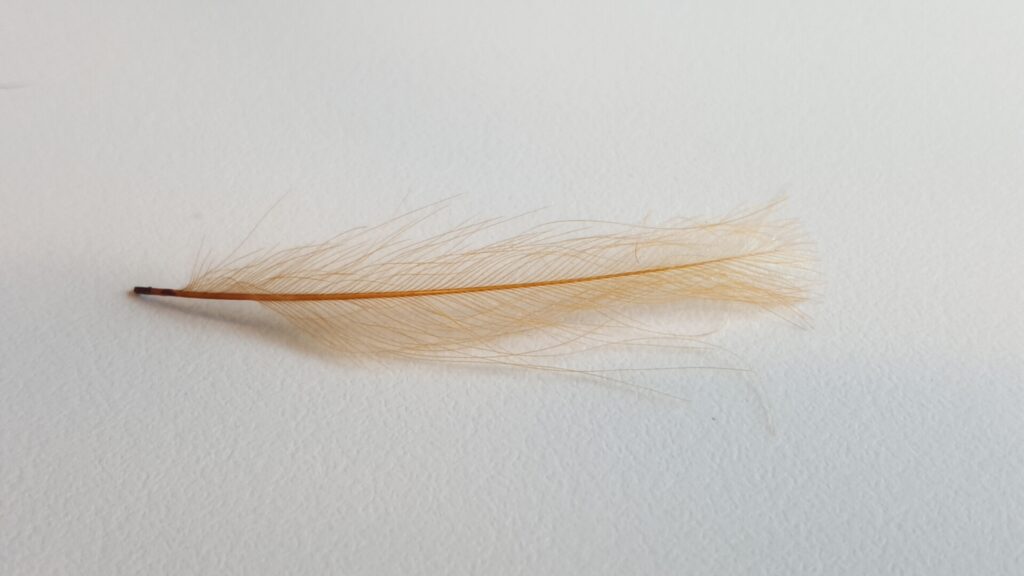
Grasp the CDC by the stem, in your left hand, then use the thumb and forefinger of the right to stroke the fibers forward and together. After a couple of times, stop when you are holding the last bit of the tip of the CDC, then shift your left hand forward to grasp next to that spot.
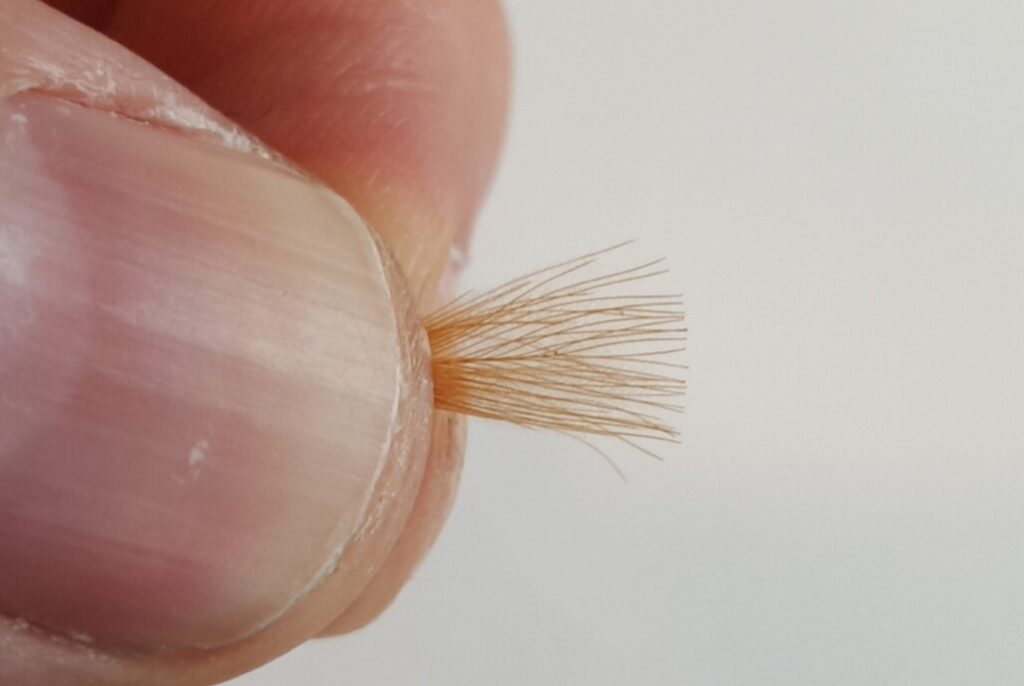
With the tip and available fibers fairly well gathered together, lay them against the shank of the hook, so the point where you are pinching is above the hanging thread.
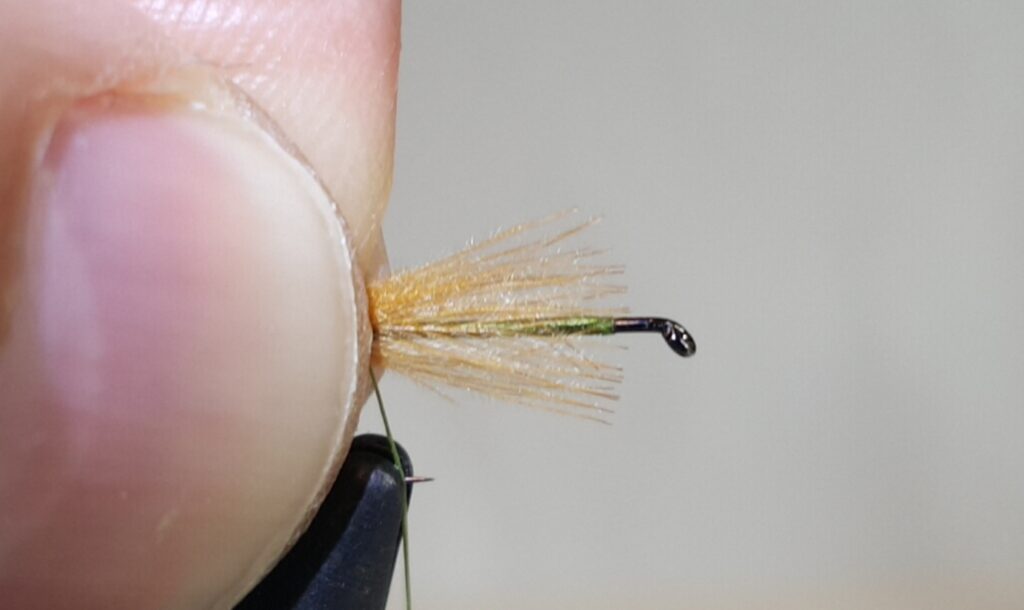
Now, pin this down with a couple of tight wraps, then work your way forward with a few more wraps. No need to make a solid layer of thread, as you want the CDC to interact with the water, on the final fly.
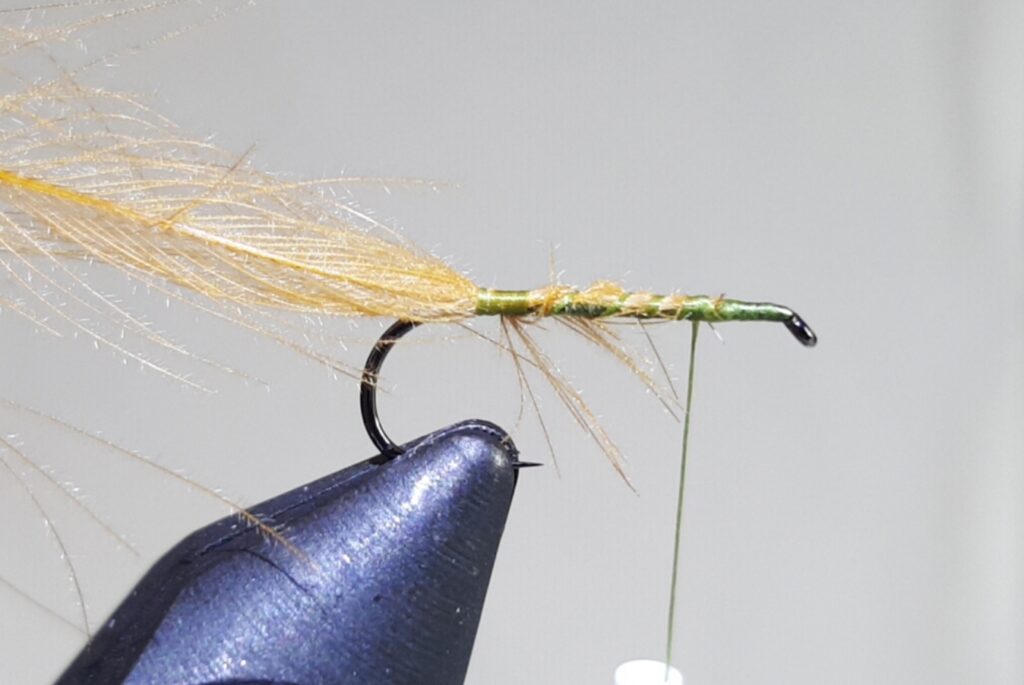
Next, wrap back with the same spacing, until your thread is at the tie-in point of the CDC, and tightly pinch/twist on dubbing.
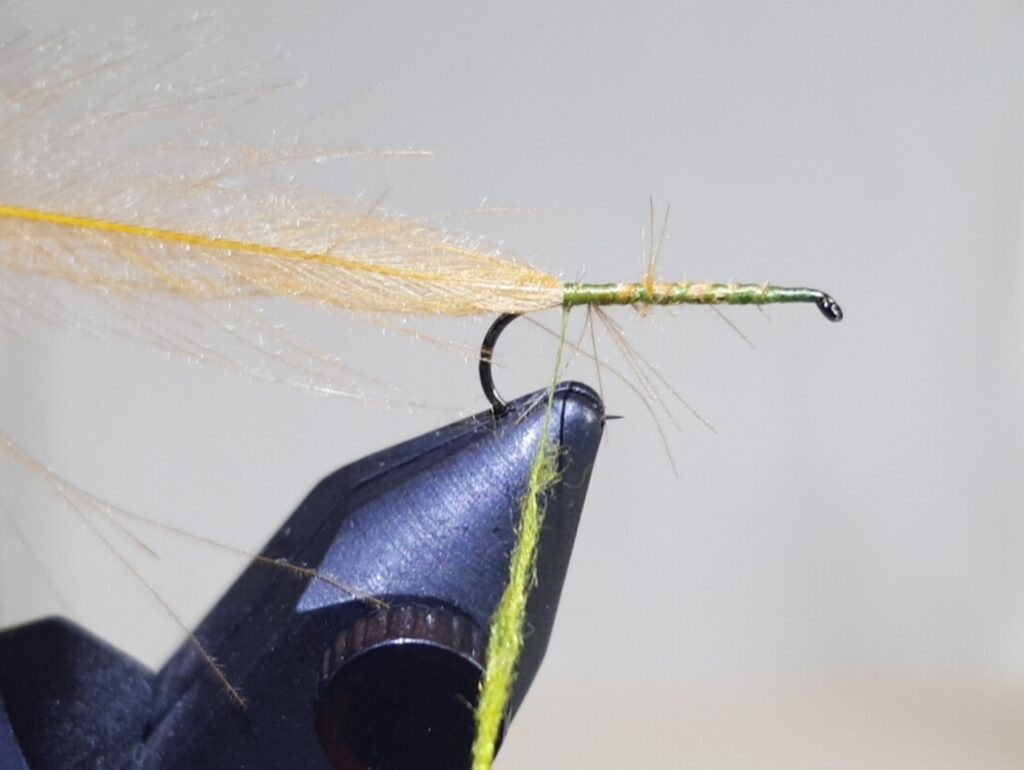
You want it tight (not like the pic, above. I was in the process of squeezing it on, when I stopped to take the pic), but you also want it thin at the ends and kinda heavily layered in the middle. In the end, you want a plump little insect body shape, as you wrap forward.
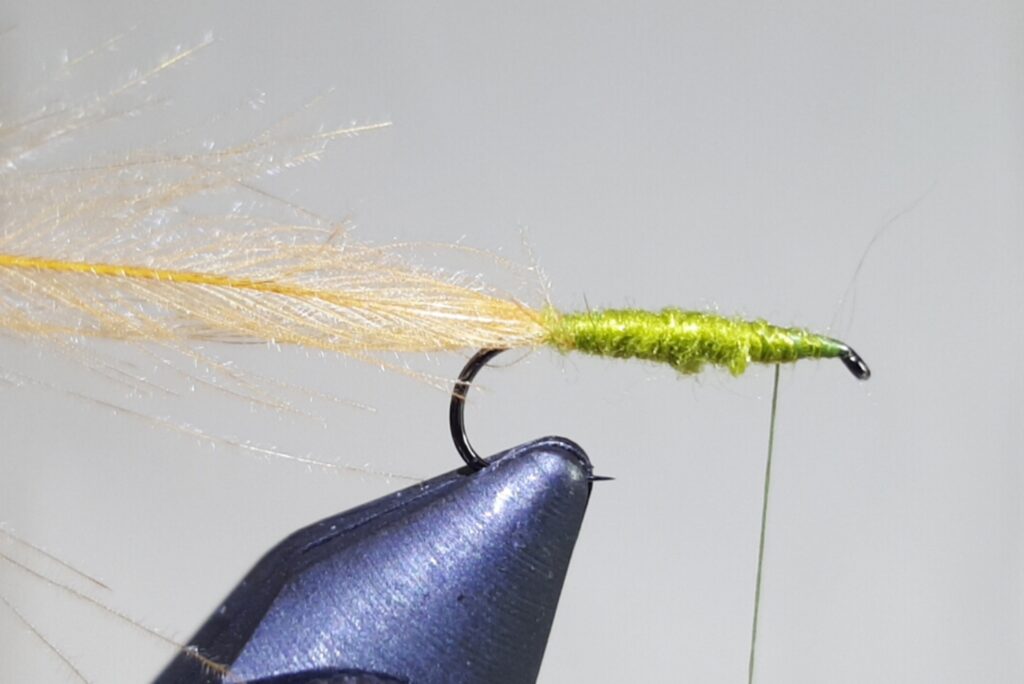
At this point, I often half-hitch the thread, so it can’t slip off over the eye, and hang it on the rotary rest off to the right, so it is out of the way. However you are comfortable with ensuring the thread does not loosen or slip, the next thing you need to do is wrap the CDC forward. I like to give it a solid turn around the base of the dubbing, then come forward with gaps (Palmering), so the dubbing shows through a bit.
Looks “buggy” to me.
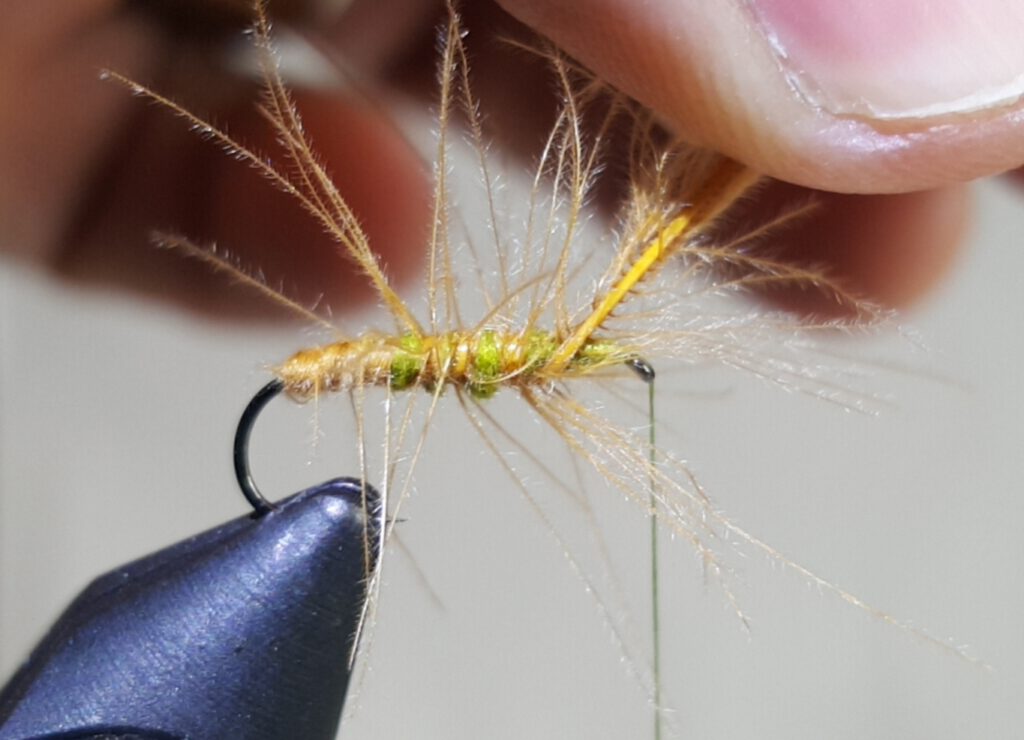
When you get to this point, three or four tight wraps around the remaining end of the CDC feather, then snip it off close.
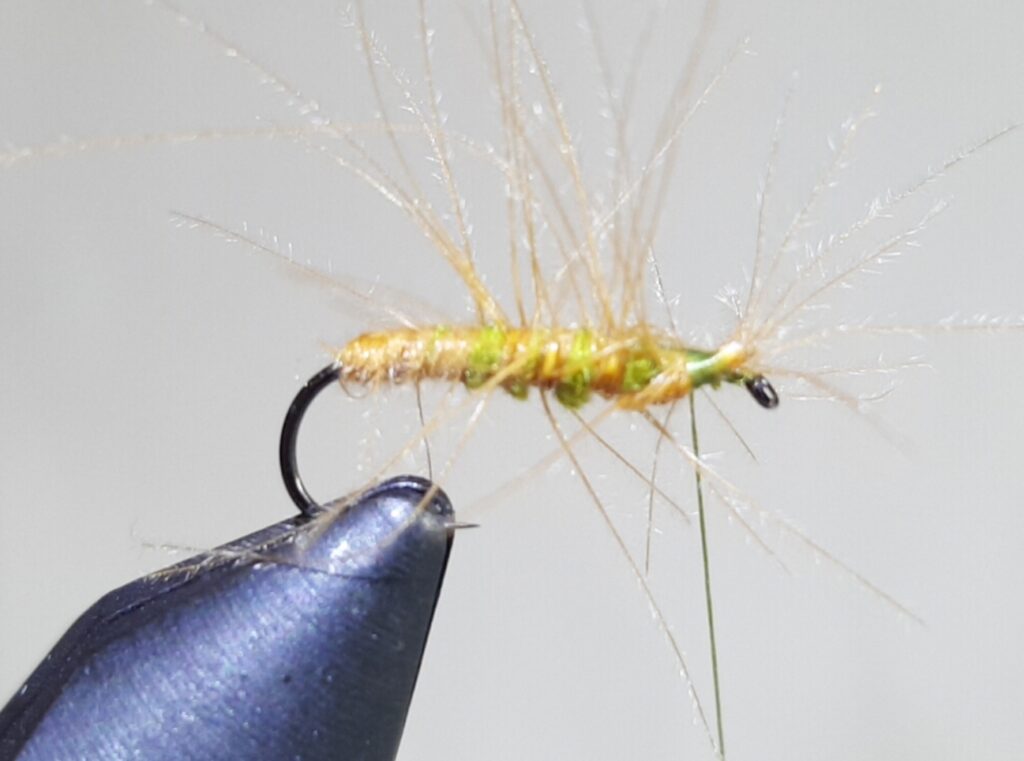
Now, take a smalling bundle of the Elk Hair (maybe half the size of clump it would take to reach from point to hook shank?), snip it off the hide, then flare the ends and remove the downy underhair.
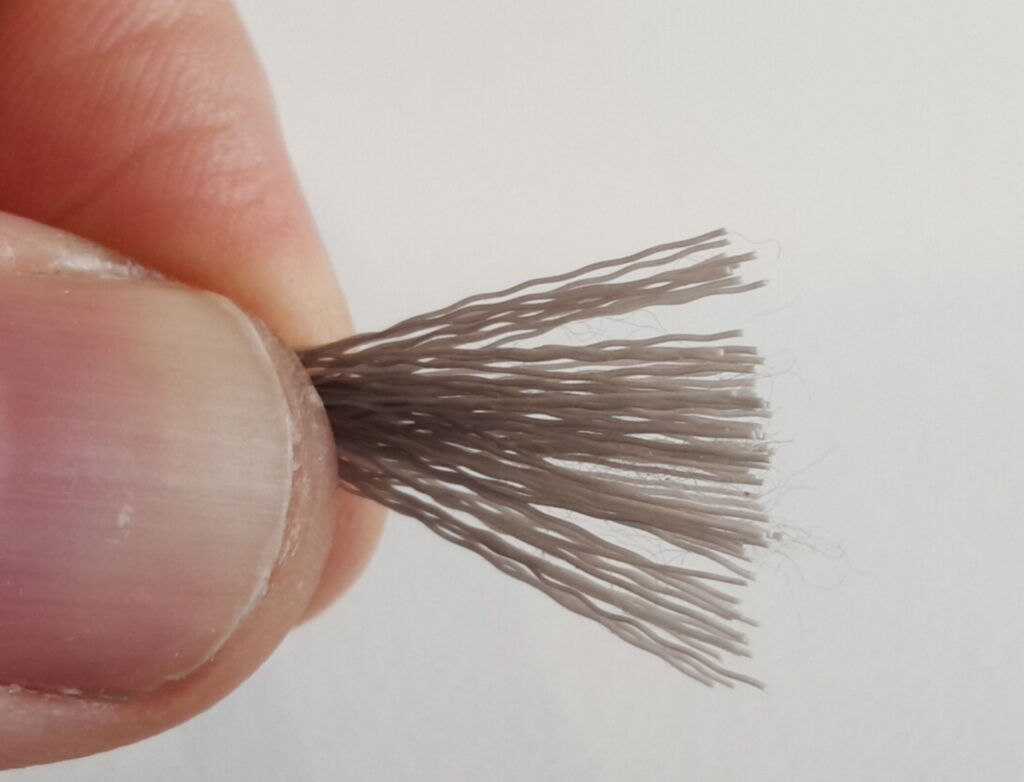
Once the base ends are cleaned up, they go tip-first into the stacker, a few raps on the desk, then slide the outer sleeve off (holding the stacker core level and base end towards your left!), to reveal the lined-up tips of the hairs.
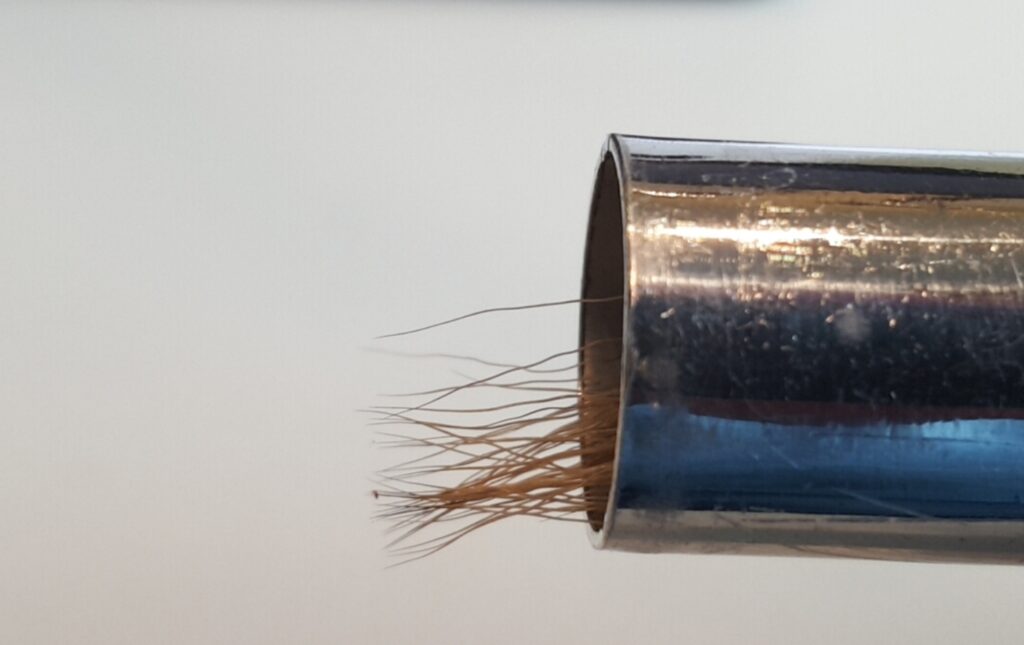
Carefully slide them out, by pinching them in your left-hand thumb/forefinger, then grasp them farther down with your right. Line them up on the hook shank, so the tips are at … or just short of … or just past the bend. The length really is up to you, so play with this.
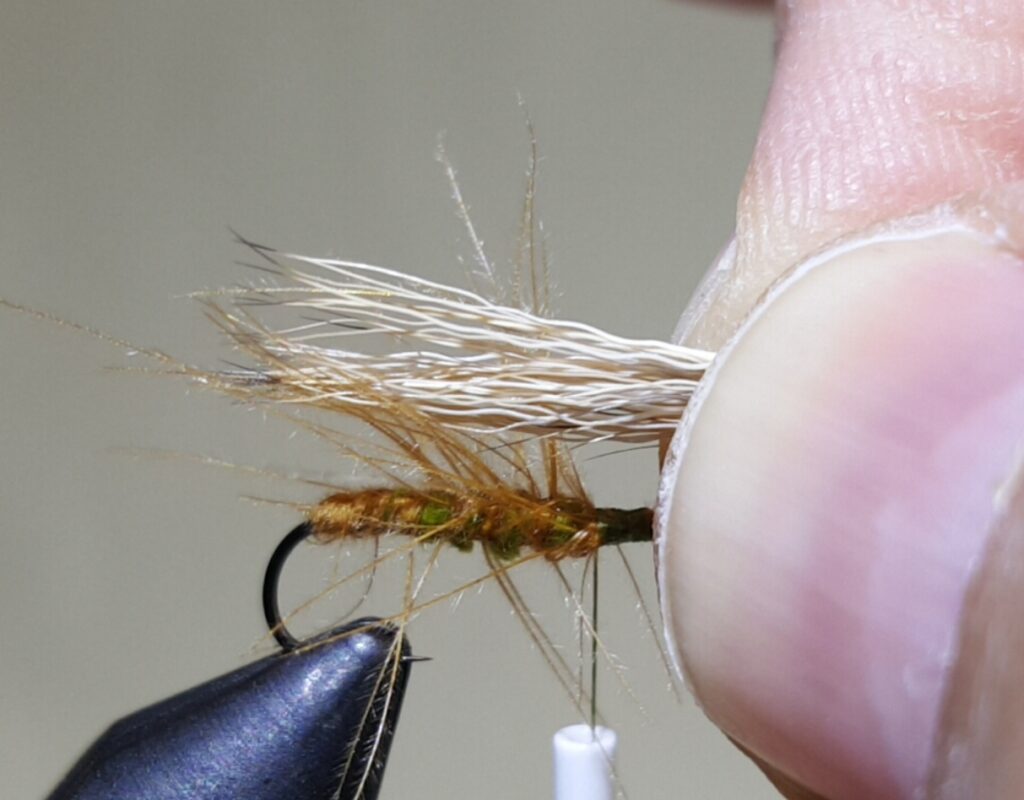
I like the wing to be a bit long. No trout has filed a complaint, so I’m just going to run with this.
With your left hand, pinch those hairs tightly, also driving them down to the top of the hook shank, then wrap carefully with the thread. On the up-stroke, wedge the thread back between the pinching thumb and forefinger (roll them back slightly to make this easier), then the down-stoke on the back side with no tension until you reach the bottom of the motion. When you do get to the bottom, simultaneously pinch the hairs harder, while pulling the thread straight down to tighten the entire wrap. This will (hopefully!) keep your hairs from shifting off the back side of the hook. Do this two or three more times, to securely anchor the hairs in place.
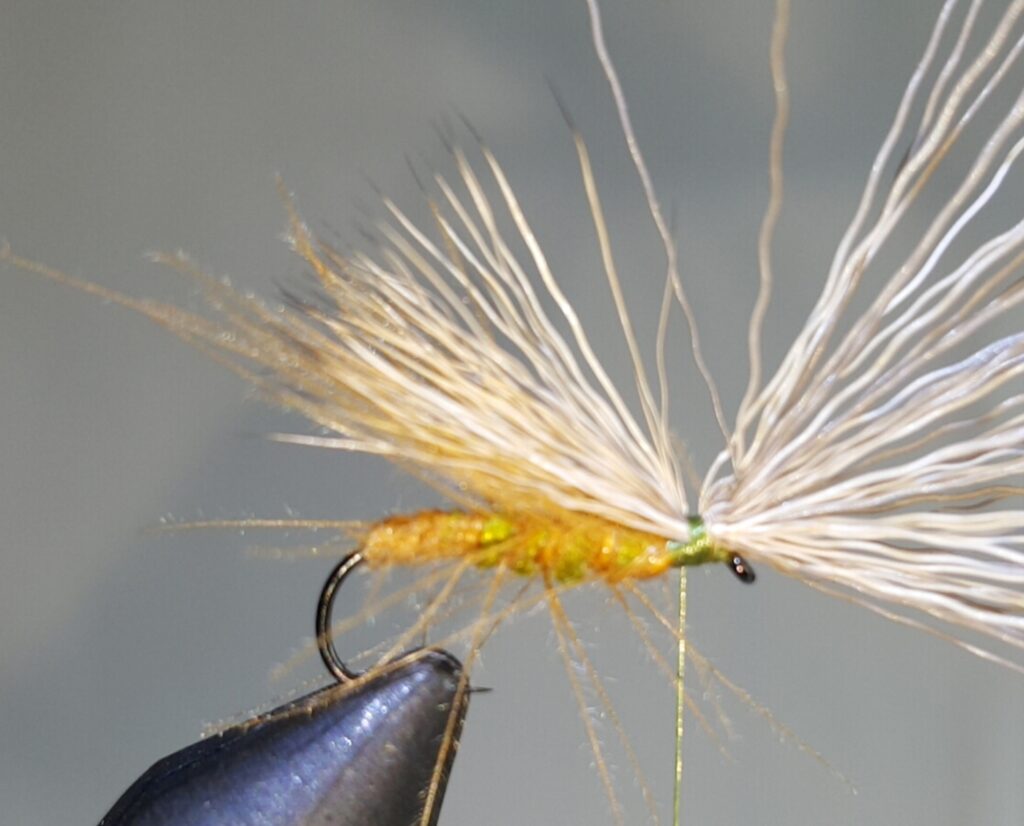
Yes, your fly will look like it is trying to grow a monstrous mohawk, at this point. It’s okay. The fish don’t mind. Besides, you get to give it a haircut, later!
I sometimes do a couple more wraps…because I fish where there are mean trout, and they like to bite the fly with the intent to damage the wrapping. Really. I’m quite certain of this.
Once this is locked in place, grab 1/3 or 1/4 of the protruding butt ends, pull them back towards the bend of the fly, and give it a couple of tight wraps between that bunch on the loose butt ends, while pinching the hairs tips also in place. This provides extra support against rotation of the hairs. I kind of angle the wraps, as much as I can, so the top of the wrap is slightly forward and the bottom is on top of the previous wrap. Maybe, pulling the head back a bit?
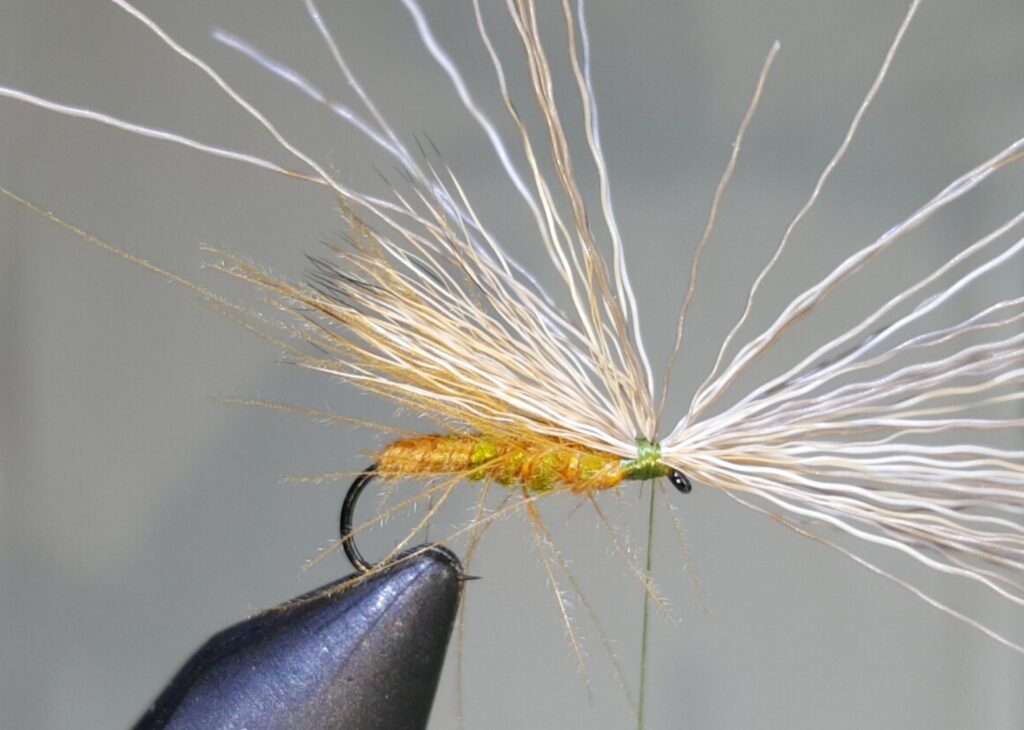
Then…another 1/3 or 1/4, and do that again.
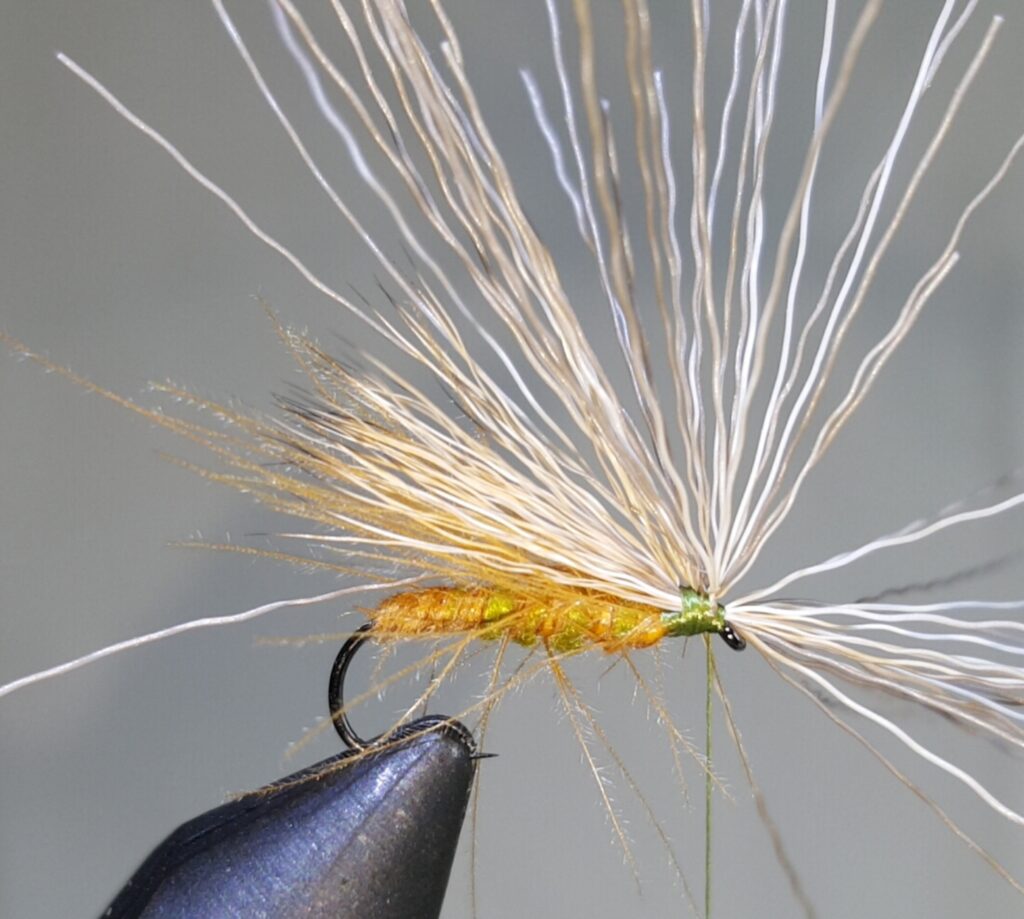
Then…I know, not much of a shocker…the last 1/3 (or the next 1/4, but you will be on your own with that last one!) goes the same way.

At this point, tightly whip finish and snip the thread, close.
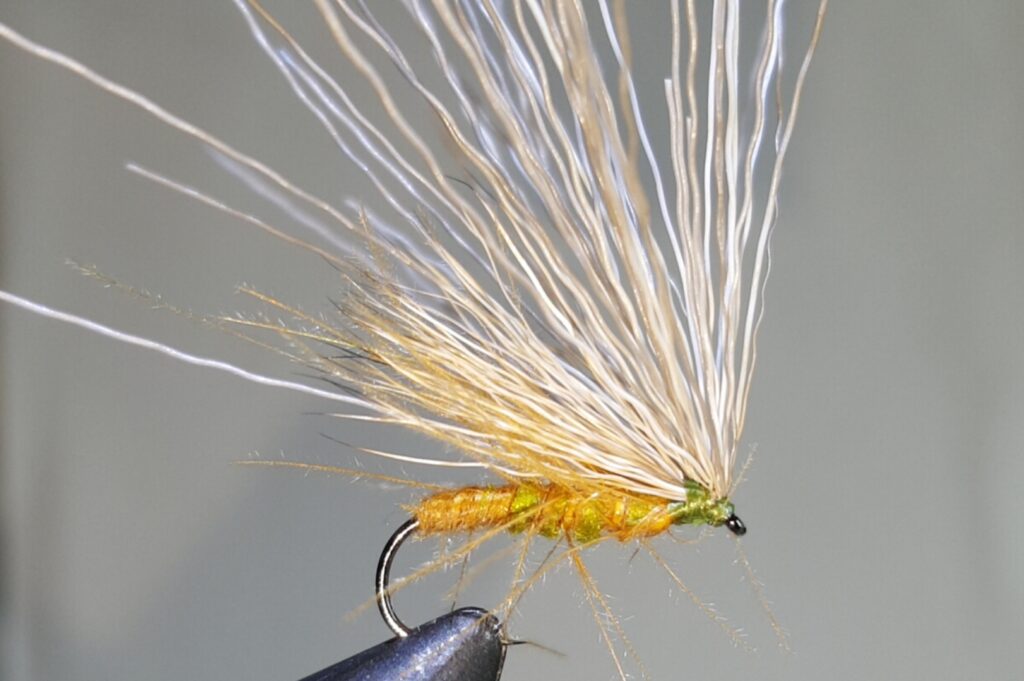
Last things… take all of the butt ends between your left thumb and forefinger, pull them upright in a tight bunch, then snip them off at an angle, above the hook eye (and kind of at the same angle as that downward bent eye).
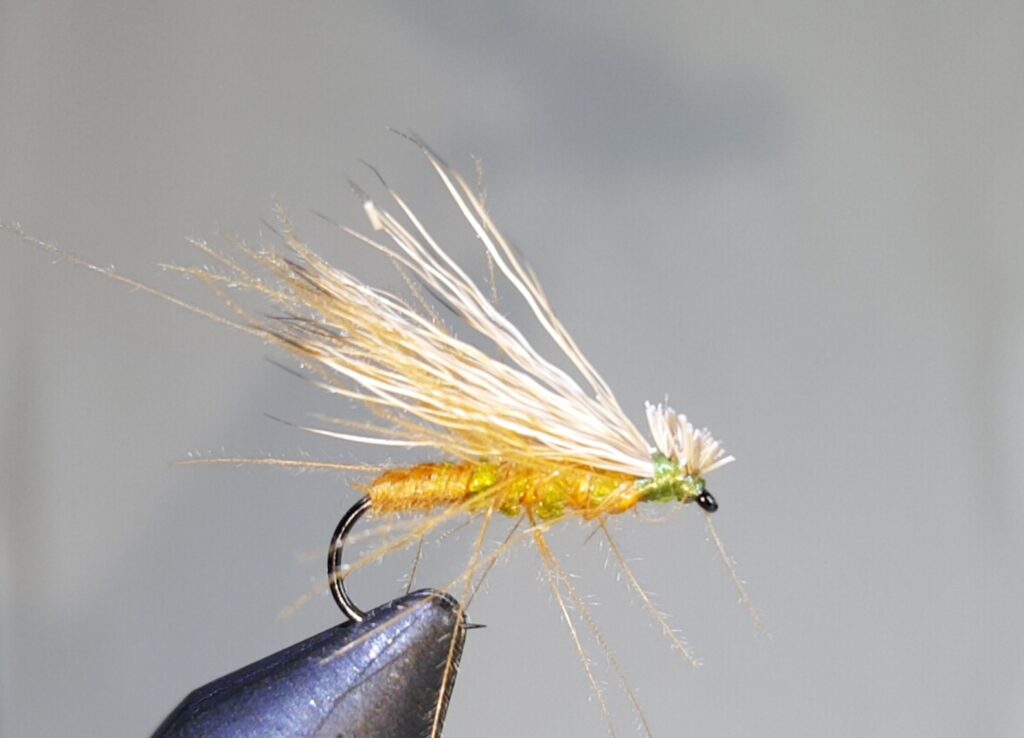
Now, a touch of head cement on the whip finish and the underside of those wraps, let it dry, then into the fly box for later use!
Once you get used to it, this actually ties very quickly. No wire wrap, like the original Elk Hair Caddis, so there is a full step missing, in comparison.
Can’t wait to try mine, this year. As a side note, it you have not tried a CDC dry, standard flotant clogs the small fibers of the feather fibers, so it should NOT be used on these flies. I’m told that there is CDC oil that can be found, but I have not tried it. The few times I have used a CDC fly, it seemed that some false casting to pop off the water was enough to prep it to go, again. Of course… I will be very intentional about testing that, this year, when I get the chance.
Tight lines…
